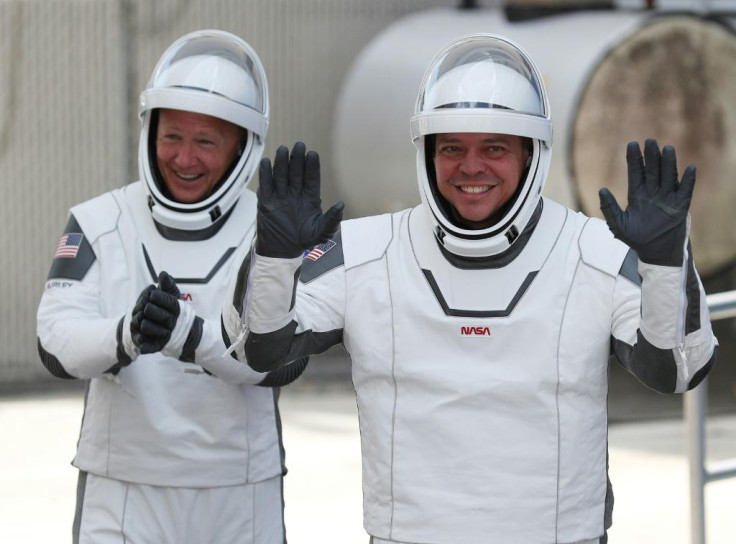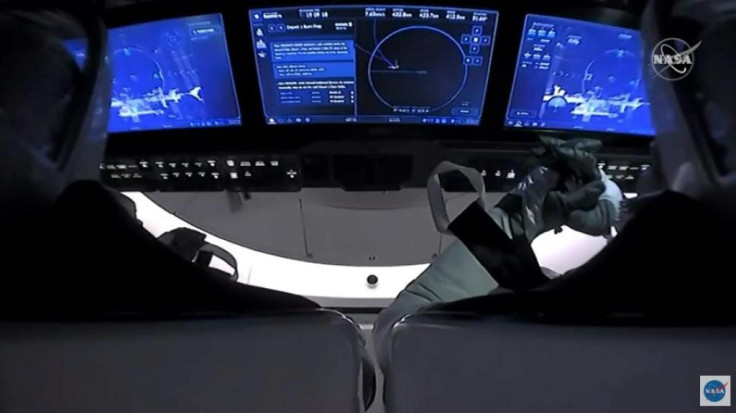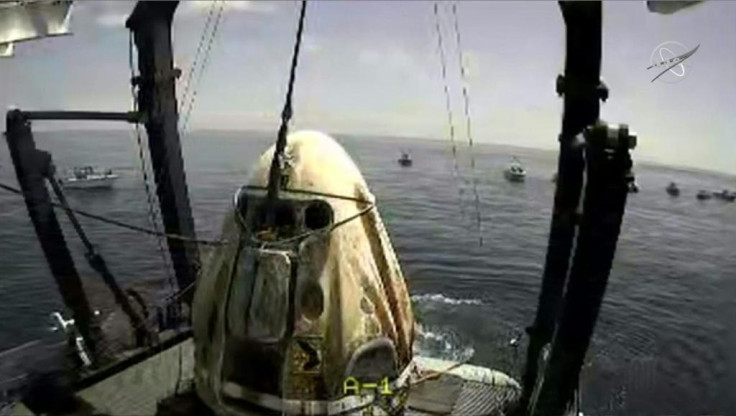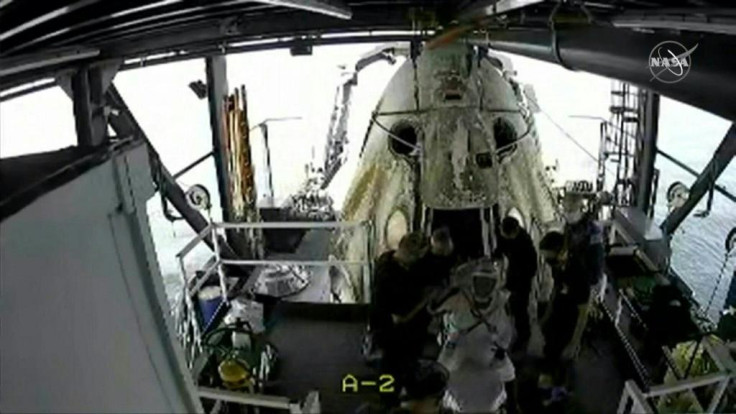SpaceX brings NASA astronauts home safe in milestone mission
The Endeavour's return marks only the beginning for the Crew Dragon as SpaceX and NASA look ahead to future missions.
America's first crewed spaceship to fly to the International Space Station in nearly a decade returned safely to Earth on Sunday, splashing down in the Gulf of Mexico.
The successful mission, carried out jointly by SpaceX and NASA, demonstrated that the United States has the capacity once more to send its astronauts to space and bring them back.
The SpaceX Crew Dragon Endeavour splashed into the water off Pensacola, Florida at 2:48 pm (1848 GMT), trailed by its four main parachutes.

It was the first water landing for a crewed US spaceship since the 1975 Apollo-Soyuz mission.
"It's truly our honor and privilege," said pilot Doug Hurley, who was joined on the mission by commander Bob Behnken.
"On behalf of the NASA and SpaceX teams, welcome back to planet Earth and thanks for flying SpaceX," replied SpaceX's Mike Heiman, to laughter in the control room.

Said SpaceX founder Elon Musk after the astronauts were safely on land: "I'm not very religious but I prayed for this one."
A number of civilian boats swarmed the landing zone as a recovery ship sped to the scorched capsule and hoisted it aboard with its crane.
The hatch opening was briefly delayed as a team worked to stop a leak of rocket fuel vapor.

Around an hour after splashdown, the astronauts exited the capsule and headed for shore on a helicopter.
They were reunited with their families in Houston, where they walked off a plane -- in apparently good physical shape and upbeat spirits -- at a military base.
Addressing a socially distanced welcome ceremony in a hangar, Behnken praised the SpaceX team behind the successful mission.
"We definitely are old dogs and like some of our old tricks... (but) as we go forward to further activities, whether it's in lower orbit, to the moon or beyond, we need to figure out the best way to share what NASA knows with a contractor team and help them be as successful as possible."
NASA administrator Jim Bridenstine also hailed collaboration with private companies.
"We are entering a new era of human spaceflight, where NASA is no longer the purchaser, owner and operator of all the hardware," he told reporters.

"This is really just the beginning: we are starting the journey of bringing people regularly to and from low Earth orbit, on to the Moon, and then ultimately on to Mars," added Gwynne Shotwell, president of SpaceX.

President Donald Trump -- who had travelled to Florida for the capsule's launch two months ago -- hailed its safe return.
"Thank you to all!" he tweeted. "Great to have NASA Astronauts return to Earth after very successful two month mission."
The United States has had to rely on Russia for rides to space since the last Space Shuttle flew in 2011.
The mission is also a huge win for Musk's SpaceX, which was founded in only 2002 but has leap-frogged its way past Boeing, its main competitor in the commercial space race.
The US has paid the two companies a total of about $7 billion for their "space taxi" contracts, though aerospace giant Boeing's efforts have badly floundered.
The Crew Dragon capsule performed several precisely choreographed sequences in order to return home safely.
First, it jettisoned its "trunk" that contains its power, heat and other systems, which burned up in the atmosphere.
Endeavour then fired its thrusters to maneuver itself into the proper orbit and trajectory for splashdown.
As it re-entered the atmosphere at a speed of around 17,500 mph (28,000 kph), it experienced temperatures of 3,500 degrees Fahrenheit (1900 degrees Celsius).
It deployed two sets of parachutes on its descent, bringing its speed down to a mere 15 mph as it hit the Gulf of Mexico.
The Endeavour's return marks only the beginning for the Crew Dragon as SpaceX and NASA look ahead to future missions.
Endeavour will now undergo a six-week inspection to certify the vessel as worthy of future low-Earth orbit missions.
Take-off is set for late September, and the crew are due to spend six months on the space station.
Copyright AFP. All rights reserved.
© Copyright IBTimes 2025. All rights reserved.




















